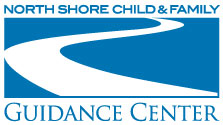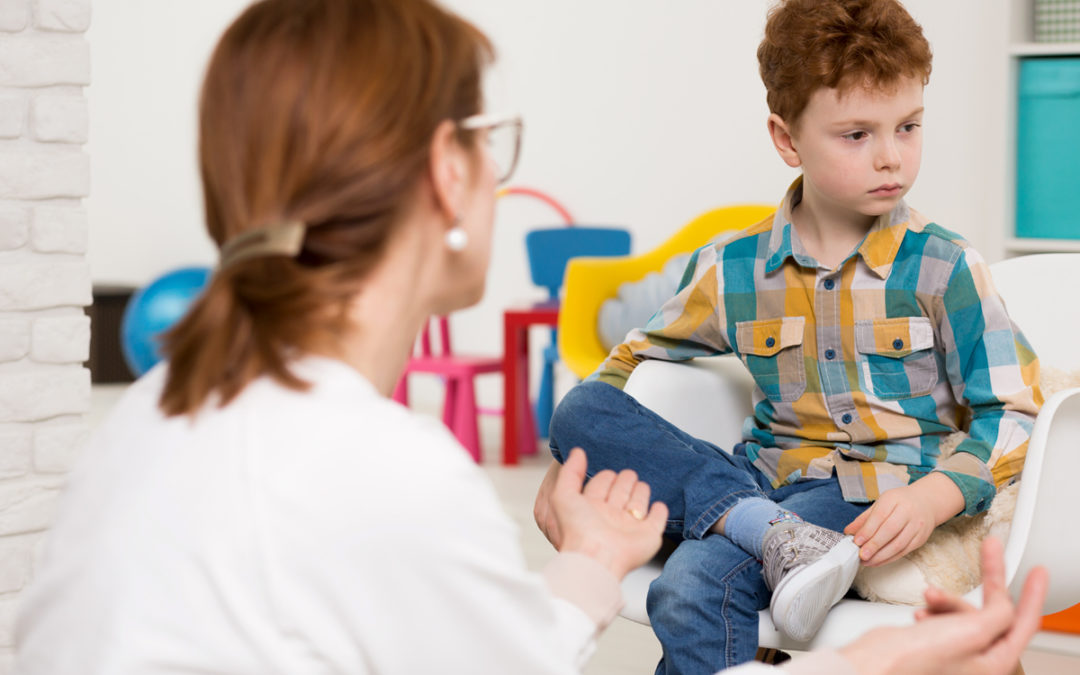
by North Shore Child & Family Guidance Center | Apr 24, 2018 | Blog
Most babies start to show an interest in the world and the people around them at a very young age. By their first birthday, typical toddlers look people in the eye, copy words, play games like peek-a-boo and engage in clapping, waving hello and good-bye, and other simple behaviors.
But for children with Autism Spectrum Disorder, or ASD, the picture is often very different.
According to the Centers for Disease Control and Prevention, people with ASD—which is a complex developmental disability that manifests in many different ways and to many different degrees—may struggle with social, emotional and communication skills.
Children or adults with ASD might:
- not point at objects to show interest (for example, not point at an airplane flying over)
- avoid eye contact and want to be alone
- prefer not to be held or cuddled, or might cuddle only when they want to
- appear to be unaware when people talk to them, but respond to other sounds
- repeat or echo words or phrases said to them, or repeat words or phrases in place of normal language
- have trouble expressing their needs using typical words or motions
- not play “pretend” games (for example, not pretend to “feed” a doll)
- have trouble adapting when a routine changes
- have unusual reactions to the way things smell, taste, look, feel or sound
According to Dr. Sue Cohen, Director of Early Childhood and Psychological Services at North Shore Child & Family Guidance Center, other signs to look for include a child not responding to his or her name when called; repeating actions over and over again; and having highly restricted interests.
“People with ASD may have trouble understanding other people’s feelings or verbalizing their own feelings,” she says. “Their conversations may be focused only on what they are interested in, which can make it difficult for them to make friends. On the other hand, they may be very interested in people, but not know how to talk, play or relate to them. They don’t understand that others might be bored with their topic and it’s time to talk about what somebody else is interested in.”
Early intervention is important, but even with older children, treatment can result in real improvements. The Guidance Center provides thorough testing and, depending on the results, will create a customized therapeutic treatment plan, which often includes social skills groups and play therapy.
Support groups for caregivers are also very helpful. In addition to parent support groups, we have a program called GASAK, which stands for Grandparent Advocates Supporting Autistic Kids.
Also, our staff includes family advocates who often get involved in the cases, helping clients get appropriate services from their schools and other providers.
“It’s very important to determine the child’s needs and come up with a good educational and therapeutic plan,” says Dr. Cohen. Although people with ASD may face challenges, a diagnosis doesn’t mean your child won’t experience feelings of love, bonding and joy, she adds. “The child is still the same loving child they were before the diagnosis. It’s a condition they have, but it doesn’t have to define your child’s life.”
To reach the Guidance Center, call (516) 626-1971.
Sources:
http://www.autism-society.org/
https://www.cdc.gov/ncbddd/autism/facts.html
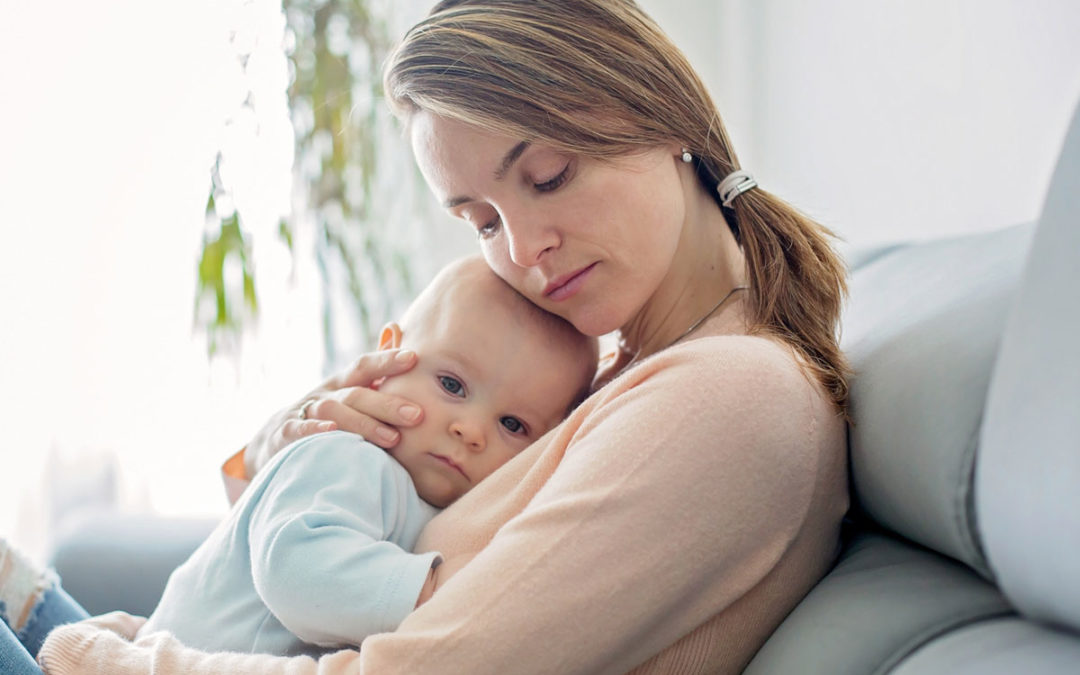
by North Shore Child & Family Guidance Center | Apr 19, 2018 | Blog
The birth of a new baby is a joyous event, but for some mothers, the situation is far more complex.
While many women experience some mild mood changes during or after the birth of a child, 15% to 20% of women experience more significant symptoms of postpartum depression and other perinatal mood and anxiety disorders, according to Vanessa McMullan, LCSW, Supervisor at The Marks Family Right From The Start 0-3+ Center, one of North Shore Child & Family Guidance Center’s three locations.
McMullan and the other therapists who are part of the Guidance Center’s Diane Goldberg Maternal Depression Program work with clients whose symptoms may include feelings of anger, sadness, irritability, guilt, lack of interest in the baby, changes in eating and sleeping habits, trouble concentrating, thoughts of hopelessness and sometimes even thoughts of harming the baby or herself. These symptoms can also begin during pregnancy, not just after they have the baby.
“A lot of times when a woman is experiencing postpartum depression or anxiety, their partners don’t always know how to help, which can create a lot of stress on the relationship,” says McMullan. If it’s their first baby, many women felt unprepared for the possibility of depression and feel devastated when they experience these symptoms. “Nobody talks about this until it happens, which makes it harder to come to terms with,” says McMullan. “They can feel that they weren’t meant to be a mother.”
Maternal depression also has a negative impact on infant and child development, with research citing the potential of speech and language delays, behavioral difficulties, lower performance in school, and an inability to form trusting relationships as part of the spectrum of outcomes.
But there’s good news. Through our Diane Goldberg Maternal Depression Program, the Guidance Center provides rapid response and diagnosis for mothers suffering from postpartum depression and other perinatal mood and anxiety disorders. Our services include:
- Screening and assessments
- Individual, couple and family therapy
- Crisis intervention consultation
- Psychiatric evaluations and medication management, where needed
- Support groups
- Back-to-work family support
- Help with self-care
“One of our most important roles is to validate that, while motherhood can be wonderful in many ways, it’s OK to admit it can be really hard, especially in the beginning,” says McMullan. “With our programs, mothers can meet others like them and get a lot of support and encouragement. And the babies can play together, too. It provides a lot of opportunities for mothers to get out of the house and not feel so isolated.”
If you are a new mom—or know someone who is—and are worried about how you or she is feeling, please give us a call at (516) 626-1971. We can help.
Sources:
https://www.health.ny.gov/community/pregnancy/health_care/perinatal/maternal_factsheet.htm
http://developingchild.harvard.edu/wp-content/uploads/2009/05/Maternal-Depression-Can-Undermine-Development.pdf

by North Shore Child & Family Guidance Center | Apr 12, 2018 | Blog
When it comes to professional sports, talk is usually focused on performance stats, injuries and other game-related topics. Rarely is emotional well-being part of the discussion. But several NBA stars have opened up about their struggles with issues like depression and anxiety—a brave move in a culture that still tends to stigmatize mental health issues.
An article on the NBA’s website focused on three star players: DeMar DeRosen, Kevin Love and Kelly Oubre Jr. The players all expressed hope that bringing the conversation about mental health into the open would help remove some of the stigma.
DeRosen had sent out a tweet about his depression, and he was very moved by the public’s reaction: “The response I got from people was so uplifting, positive, refreshing,” says DeRosen. “It’s crazy. But it made me feel good. You just look at certain things. People say ‘you helped me. Because if you’re going through something like this, I can get through it.’ It’s incredible.”
Kevin Love, who has openly discussed his panic attacks and subsequent therapy, wrote: “Mental health isn’t just an athlete thing. What you do for a living doesn’t have to define who you are. This is an everyone thing.”
While some athletes fear that others may think that, because they make a lot of money, they have no right to complain, sports psychologist Brent Walker wrote: “The reality is that professional athletes are not different,” Walker said. “Everyone has their struggles regardless of what it looks like on the outside. We all have stuff we have to deal with. Where it gets different and difficult for the professional athletes is that it’s worst in a team sport in that, ‘I can’t let anybody know. I’ve got to be a man [or woman]. I can’t let anyone know there’s something wrong with me.’ ”
North Shore Child & Family Guidance Center Executive Director Andrew Malekoff was an athlete in high school and college, and he echoes the idea that players at any level fear letting down their teammates. “One of the stresses I dealt with all the time was playing with injuries and not letting anyone know how much pain I was in, physically and emotionally,” he says. “It was as if my sense of worth was only a function of my performance.”
So, what does this mean to a child or teen athlete? The reality is that, starting at a very young age, many kids are often still taught to “suck it up” and play regardless of their physical or emotional state. That has to change.
“The fact that some of their heroes are speaking out about their battles with issues like anxiety and depression is a huge step in making it acceptable to discuss mental health issues,” says Malekoff. “Parents can also make a big difference by making sure their kids hear about these stories, so if they’re feeling emotionally vulnerable, they can know that they have nothing to be ashamed of and that it’s OK to seek out help.”
In addition, be sure that you demonstrate your pride in your child no matter how well they perform in a game. Point out what they do right and leave the coaching to the coaches.
To read more about athletes who’ve opened up about their mental health challenges, see https://www.bphope.com/bipolar-buzz/athletes-stigma-anxiety-depression-bipolar/
Sources:
http://www.nba.com/article/2018/03/11/demar-derozan-kevin-love-mental-health-conversation
http://www.nba.com/article/2018/03/06/kevin-love-cleveland-cavaliers-reveals-suffered-panic-attack-vs-atlanta-hawks#/
http://www.nba.com/article/2018/02/26/demar-derozan-toronto-raptors-opens-about-depression-tweet
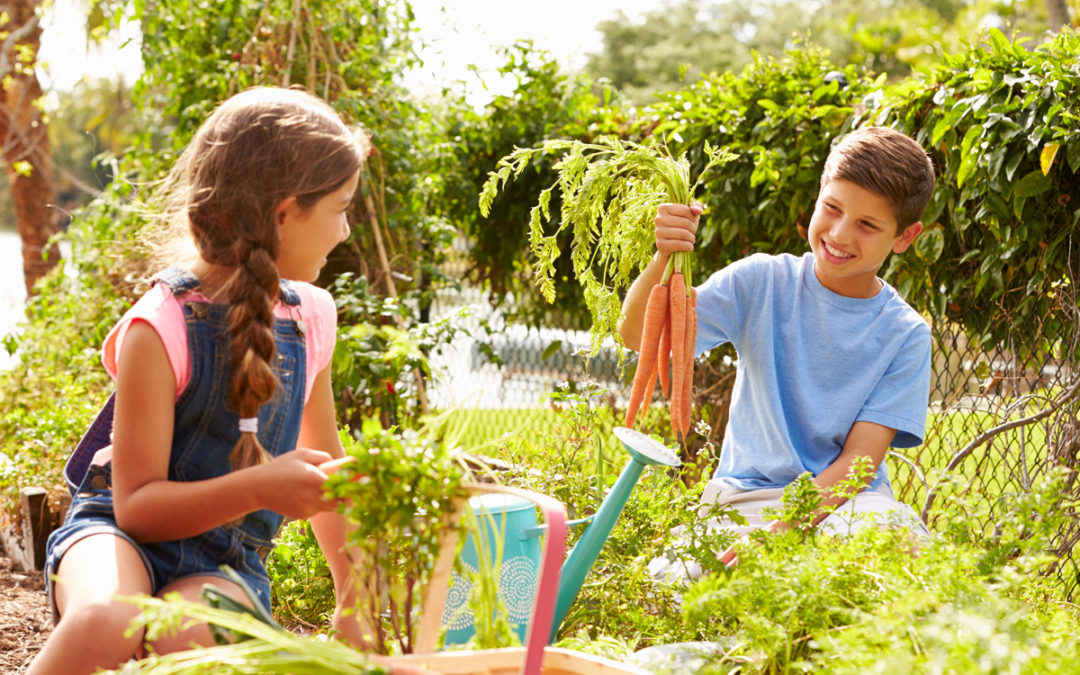
by North Shore Child & Family Guidance Center | Apr 3, 2018 | Blog
Although we began the week (once again) with several inches of snow on Long Island, spring is truly just around the corner. April is National Garden month, and many people can’t wait to get their hands in the dirt!
Gardening has obvious benefits for physical health. It gets you outdoors in the sunshine (soaking up some vitamin D!) and moving around, so it’s great exercise. And, if you have vegetables in your garden, in a few months you will be experiencing the delicious benefits of homegrown tomatoes, cucumbers and other healthy foods.
But gardening isn’t just great for your body. It also promotes emotional and psychological well-being, especially for children and teens who have disconnected from nature.
“Young people are inundated with constant stimulation from their digital devices, with many glued in front of computer screens and video games as they struggle with feelings of loneliness and rejection,” says Andrew Malekoff, Executive Director of North Shore Child & Family Guidance Center. “That lack of connection to the natural world negatively impacts them physically, emotionally and socially.”
At the Guidance Center, we’ve seen firsthand how children blossom when they “get back to the garden.” With the help of Larry Foglia and Heather Forest of Fox Hollow Farms, we designed our two organic gardens—one at our Roslyn Heights headquarters and the other at our Manhasset location, The Marks Family Right From the Start 0-3+ Center. Groups of our children and teen clients water, seed and weed the organic beds, and they’re filled with joy when they see the vegetables grow.
Teens from our Wilderness Respite Program also worked at Fox Hollow Farm with Larry and Heather, learning even more about gardening. Another benefit: Since much of the produce the kids harvest is donated to local food pantries and organizations such as Island Harvest, they experience the pride that comes from helping others.
Through their work in the garden, kids who were shy and insecure developed self-confidence and made new friends. They learned leadership and team-building skills. Tending the garden and watching it grow intensified their sense of wonder and curiosity.
And there’s more. Gardeners achieve a natural state of calm and focus called mindfulness. “Though people often associate it with meditation, mindfulness doesn’t require hours of prayerful silence or chanting mantras,” says Malekoff. “Mindfulness at its core is about staying in the present, moment by moment, to feelings, thoughts, bodily sensations and the surrounding environment.”
Mindfulness is an inherent part of the experience of gardening; it gives kids new ground to stand on, both literally and figuratively, embracing their senses of sight, smell, sound, touch and taste. Mindfulness in nature calms the brain, allowing for reflection and healing, and it’s also great for the body.
Gardening helps kids connect to the Earth, to each other and, yes, even to their parents. Young children will be in awe as you show them the fruits (and vegetables) of your joint labor. If your teens are reluctant to work with you, expose them to tools that they can begin to master—and don’t be surprised if they end up joining you in the garden.
Note: Portions of this story originally ran in Anton Media, where Andrew Malekoff writes the Parenting Plus column.
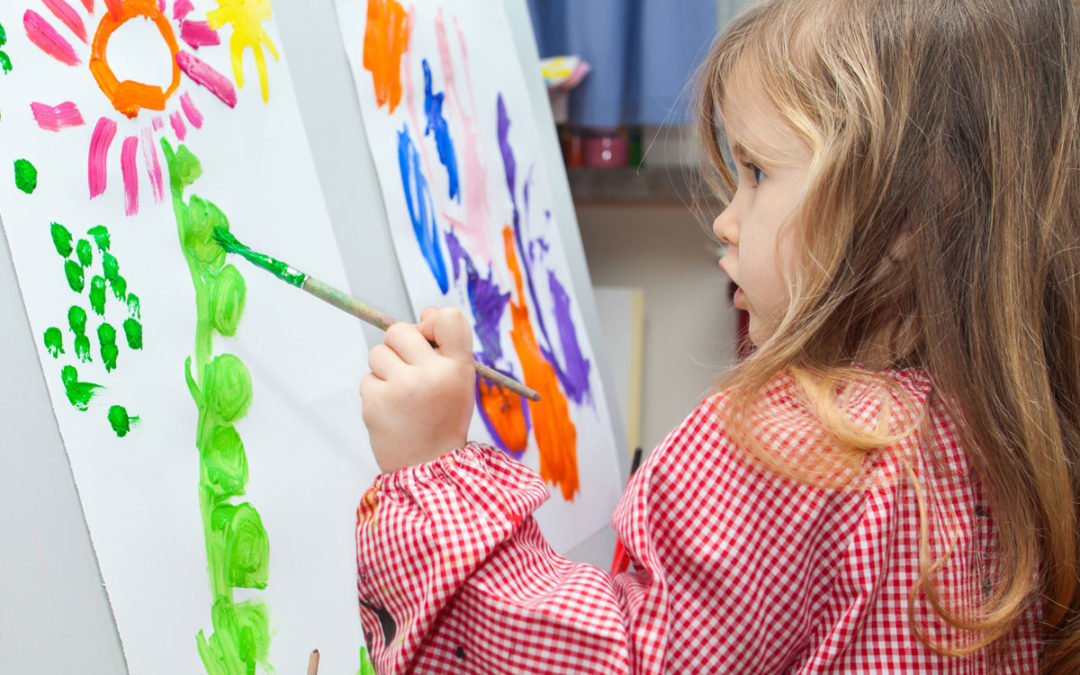
by North Shore Child & Family Guidance Center | Mar 28, 2018 | Blog
The traditional picture of therapy is of a social worker, psychologist or other mental health professional sitting in a chair and taking notes on a pad as the client speaks about his or her challenges. Talk therapy is, indeed, an important tool, but therapy comes in many forms.
One method we use at North Shore Child & Family Guidance Center to encourage our clients to express themselves and help them understand their feelings is through the use of art. At our Marks Family Right From the Start 0-3+ Center (RFTS), art in its many forms is often used with our youngest clients.
“Children sometimes find it scary to express themselves early on in therapy,” explains Dr. Sue Cohen, Director of Early Childhood and Psychological Services at RFTS. “This is especially the case for children with limited vocabularies for various reasons. Children are more comfortable drawing a picture than responding to questions. Through drawing or other art mediums, a child can visually express and record his or her experiences, feelings and imagination.”
In addition to providing a creative way to deal with tough issues that young children might face, art can help reduce stress. “At Right From the Start,” says Dr. Cohen, “we use many forms of creative expression, from traditional painting, markers and crayons to storytelling with thumbprints and expressive positive statements written in chalk on the sidewalk. The walls of the play therapy offices are filled with the artwork of young children who are proud to see their productions displayed week after week.”
Using art is also a great way to get teens to open up. When two of our teen groups were given the opportunity to express themselves through art, they took to the challenge whole-heartedly.
Guidance Center social worker Amanda Martin-Squillace, along with social worker Brooke Hambrecht, chose art as the means to allow two of their teen groups to express themselves in a joint project using the techniques inspired by modern master Jackson Pollack. “I chose Pollack because his style shows that in seeming creative chaos, something beautiful can happen,” says Martin-Squillace. “It’s like in the therapeutic process, where you can have catharsis, just like with art.”
The two groups were given cups of varied colored paints (all donated by Ace Hardware in Rockville Centre), and the social workers demonstrated Pollack’s technique of tossing and dripping paint onto large canvasses. “The kids were hesitant at first,” says Martin-Squillace, “but when they saw Brooke and I throw the paint on the 6-foot by 9-foot canvas, they let loose and really got into it.”
The result—a large mural called “Life’s Layers” —was truly amazing. “It’s a magnificent piece, and the teens were really excited and proud of it,” says Martin-Squillace. “They felt very accomplished when they saw what they had created.”
This project is a great example of how using the arts can have great benefits for those working through mental health challenges such as depression and anxiety. “Therapy isn’t just about talking,” says Martin-Squillace. “It’s also using creative outlets to express and process emotions. We always talk about coping mechanisms with the kids, and a lot of them use technology like television, gaming and social media. This experience gave them a snapshot of other ways to use creative outlets to help self-soothe.”
For a list of art activities for teenagers that encourage spontaneity, original thinking and imagination, visit the website of Expressive Art Workshops or of Simple Practice
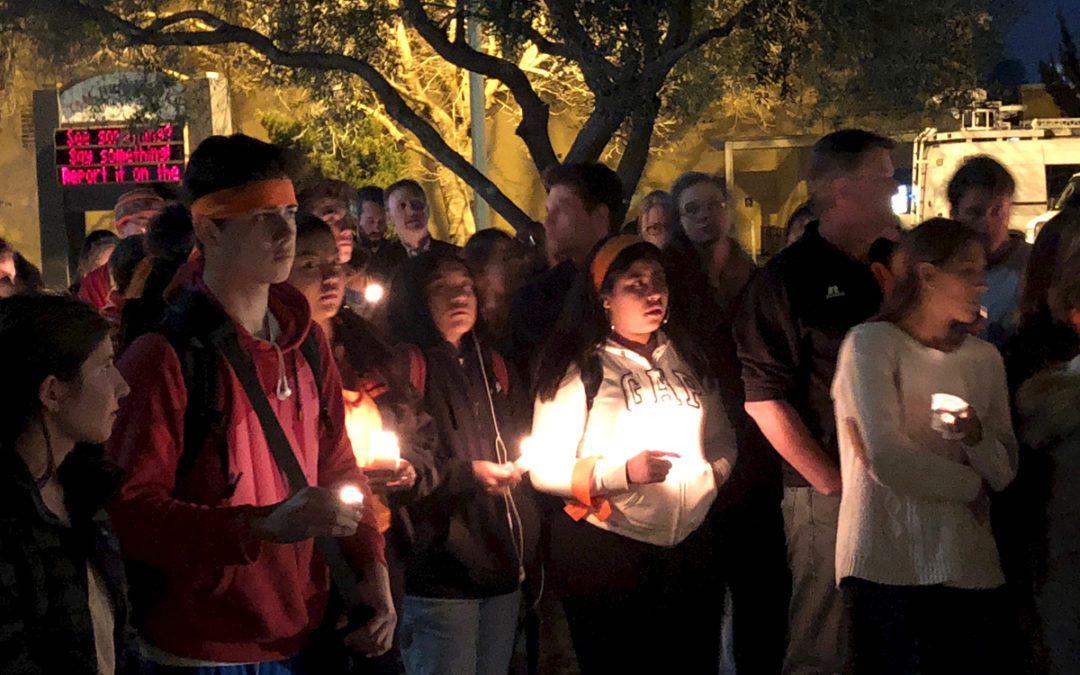
by North Shore Child & Family Guidance Center | Mar 20, 2018 | Blog
One week ago, tens of thousands of students across the nation solemnly walked out of their schools, many holding candles and reading the names of the 17 high school students and teachers who died in the massacre at Marjory Stoneman Douglas High School in Parkland, Florida, on February 14, 2018.
In less than a month’s time, these students have created a nationwide movement. This coming Saturday, March 24, 2018, hundreds of thousands of people of every age will be participating in the March for Our Lives in numerous cities and towns all over the United States.
In a recent story on 60 Minutes, one of the teen survivors of the Parkland attack referred to himself and his peers as the “mass-shooting generation.” They were born after Columbine happened, and these kinds of events have been part of their consciousness for their entire lives. The difference in this case is that the students are taking their grief and outrage and turning it into action.
Emma Gonzalez, one of the survivors-turned-activists from the high school, wrote in Harper’s Bazaar: “We are tired of being ignored. So we are speaking up for those who don’t have anyone listening to them, for those who can’t talk about it just yet, and for those who will never speak again. We are grieving, we are furious, and we are using our words fiercely and desperately because that’s the only thing standing between us and this happening again.”
Judith Herman M.D., author of Trauma and Recovery, says trauma survivors who become activists “recognize a political or religious dimension in their misfortune and discover that they can transform the meaning of their personal tragedy by making it the basis for social action. While there is no way to compensate for an atrocity, there is a way to transcend it, by making it a gift to others. The trauma is redeemed only when it becomes the source of a survivor mission. Social action offers the survivor a source of power that draws upon her own initiative, energy and resourcefulness but that magnifies these qualities far beyond her own capacities.”
Andrew Malekoff, Executive Director of North Shore Child & Family Guidance Center, says that taking action with and on behalf of others can open the door to increasing empathy among children and youth and help them to empower themselves to make a difference.
“Talking about the trauma is rarely if ever enough,” says Malekoff. “Kids need to learn how to make waves, big waves and gentle waves. Making waves is an inherently spiritual act, one that leads young people to think and feel deeply. Making waves is an empowering and hopeful act and an antidote to inertia and apathy.”
Sources:
https://www.harpersbazaar.com/culture/politics/a18715714/protesting-nra-gun-control-true-story/
https://www.cbsnews.com/news/parkland-shooting-what-stoneman-douglas-students-want-you-to-know/
https://www.cnn.com/2018/02/15/opinions/florida-shooting-no-more-opinion-kasky/index.html
https://www.unhookedmedia.com/um-articles/2016/7/25/finding-a-survivor-mission
Photo Credit: Fabrice Florin https://www.flickr.com/photos/fabola/38488882960
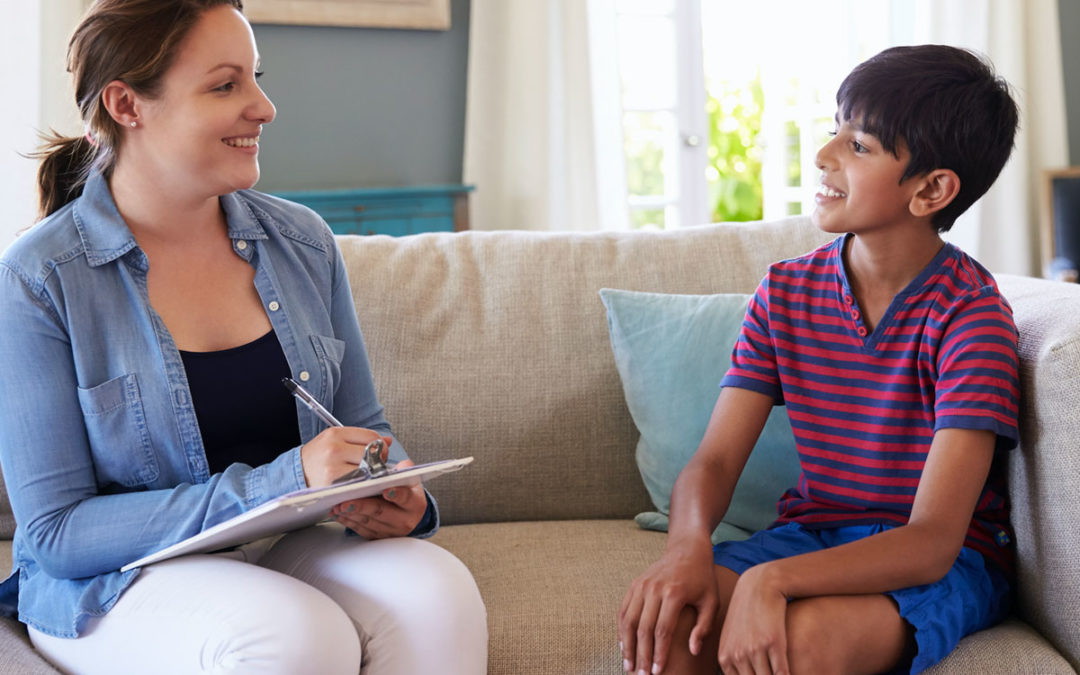
by North Shore Child & Family Guidance Center | Mar 14, 2018 | Blog
March is National Professional Social Work Month, with this year’s theme “Social Workers: Leaders. Advocates. Champions.” We thought it would be a good time to acknowledge and celebrate the many contributions these caring professionals provide to our communities.
First off, a statistic. In the United States, there are approximately 650,000 social workers, and they work in varied settings including hospitals, community mental health organizations and private practices, among others.
They also play a wide variety of roles. Some specialize in clinical work, which means providing counseling/therapy. Some focus on working with a specific population, such as veterans or children or senior citizens. Some work advocating for policy changes and social and economic justice issues in the halls of Washington or local/regional political realms.
At North Shore Child & Family Guidance Center, our social workers are versatile and perform a combination of clinical, prevention and outreach services. They operate out of our headquarters and two branch offices as well three schools and provide home visits for select families with vulnerable children that might not participate in traditional office-based mental health care.
Whatever their specialty, all social workers are bound by the NASW Code of Ethics, which calls on members of the profession “to enhance human well-being and help meet the basic needs of all people, with particular attention to the needs and empowerment of people who are vulnerable, oppressed and living in poverty.”
“With government rolling back funding on so many programs, the advocacy aspect of social workers is more important than ever,” says Andrew Malekoff, Executive Director at the Guidance Center. “The protections that came with the Affordable Care Act are in jeopardy, so we must advocate for the funding to remain for the services that our clients need.”
One of our longtime social workers is Amy Ipp-Gelb, MSW, who is the Clinical Coordinator at the BOCES Middle School in Hicksville, where the Guidance Center provides in-school mental health services to students in our Intensive Support Program (ISP). Each year Amy honors Social Work month with a dedication at the school where she has worked since 2001.
“Many of our students stay with us from 6th to 9th grades, and then either move to our High School ISP site in Wantagh or go back to their district. We see them every day, providing mental health services in school. We see them through good days and bad days. We get to know their parents and families, too.
It’s a job that Gelb truly loves. “Over the years, there’s real transformational physical and emotional growth in these young people. The reward is phenomenal.”
We thank all the social workers and other professionals in our agency and throughout the nation. They are true life-savers.
Sources:
www.socialworkers.org/
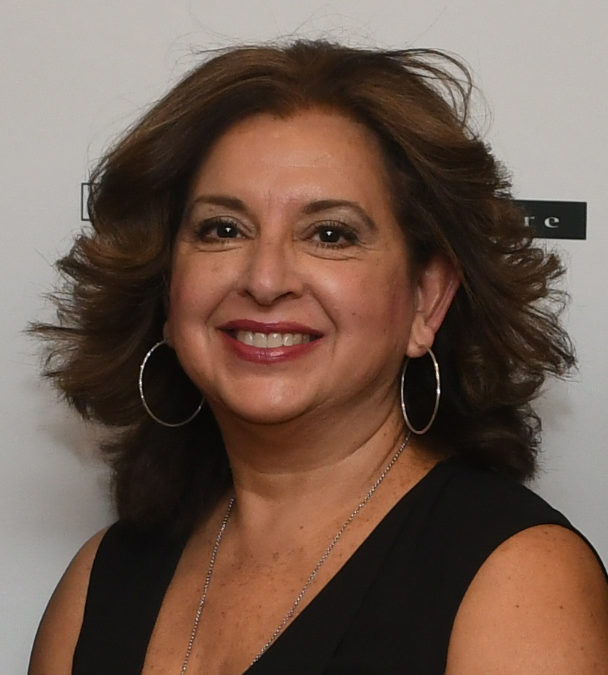
by North Shore Child & Family Guidance Center | Mar 8, 2018 | Blog
March 8th marks the celebration of International Women’s Day, and at North Shore Child & Family Guidance Center, we are lucky and proud that our Associate Executive Director is a woman well worth celebrating.
Barros-Rivera received her Masters in Social Work from SUNY at Stony Brook in 1980. Since acquiring her degree she has been dedicated to working with children, youth and families who have been impacted by psychosocial stressors such as high poverty, drug and alcohol abuse, mental illness and trauma.
She directly supervises multiple programs and staff at the Guidance Center and has been in an administrative position with us since 1989, when she was hired to develop and implement Drug and Alcohol treatment services for the agency. One of the programs she supervises is the Intensive Support Program, a collaborative effort developed by Nassau B.O.C.E.S and the Guidance Center that provides a therapeutic and nurturing alternative, offering intensive mental health services onsite at three schools for students ages 5-21 from all 56 Nassau County school districts.
As a bicultural and bilingual mental health professional, Barros-Rivera is particularly sensitive to the special needs of the immigrant Latino family, and she has worked diligently to implement culturally appropriate services that provide quality care for that population.
One example is her founding and development of the Guidance Center’s Latina Girls Project, an innovative program that employs individual, group and family therapy, along with monthly outings and other activities, to help first-generation Latina teens. She both supervises this program and also works directly with the teenagers, helping them overcome anxiety, depression, suicidal ideation and cultural conflicts within their families.
Andrew Malekoff, Executive Director and CEO of the Guidance Center, says Barros-Rivera’s contribution to the organization is critical to our success. “Regina is involved on every level, from conducting client therapy with individual, families and groups to creating innovative programs that have helped heal thousands of children, teens and families,” he says.
Last year, Barros-Rivera was honored at the 2017 “What’s Great in Our State—A Celebration of Children’s Mental Health Awareness” for her leadership role in the organization. The event honors individuals and programs that are successfully addressing the issues of children’s mental health, including work on early identification, outreach, family education and providing mental health awareness in schools.
On this International Women’s Day, we thank Regina Barros-Rivera for being a champion for children, teens and families who come to us seeking help. To them, she is a true heroine.
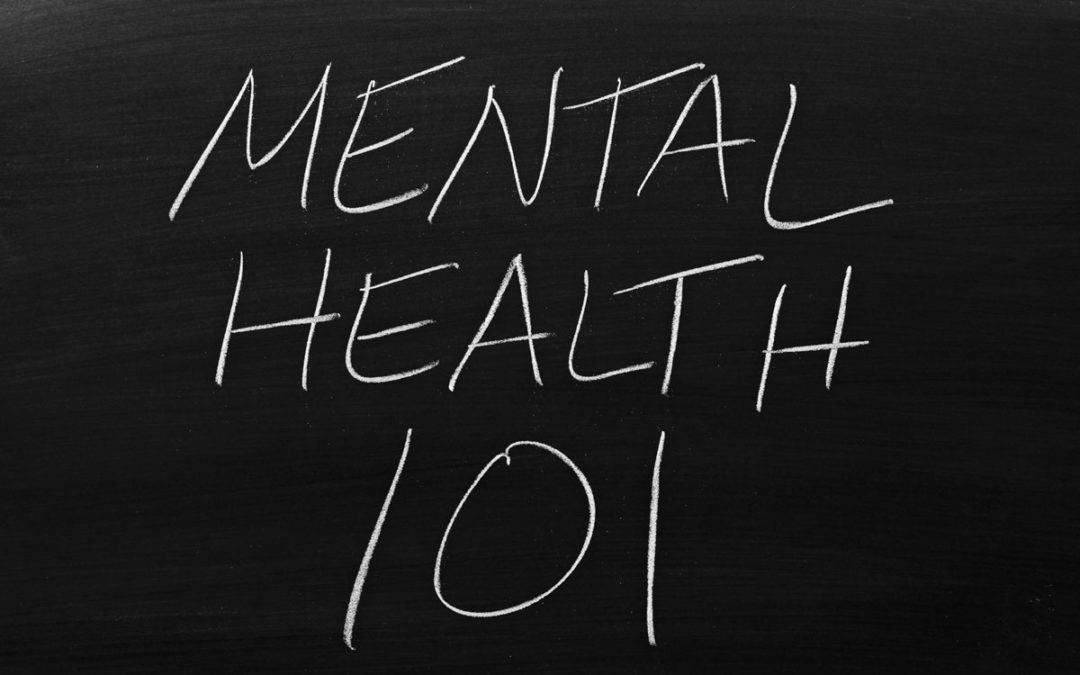
by North Shore Child & Family Guidance Center | Mar 1, 2018 | Blog
The tragedy in Parkland, Florida has once again brought up the conversation about violence and mental illness. It’s not surprising: After all, how could a “sane” person commit such a heinous act as the murder of 17 students and teachers?
The leadership of the National Rifle Association wants to focus the conversation on the idea that Guns don’t kill people; people kill people. When they say that those “people” who commit violence acts such as the one in Parkland are mentally ill, their conclusion is, then, that it really has nothing to do with guns.
The truth is that all sorts of people with guns kill people. And they are not primarily people diagnosed with mental illness.
As North Shore Child & Family Guidance Center’s Executive Director, Andrew Malekoff, wrote in a recent column, “It is incredibly rare for those who are labeled as mentally ill to be violent. In fact, they are far more likely to be the victims of violence than the perpetrators.”
The idea of making mental health counseling a top priority in this country is certainly a concept that any mental health professional would support, but not because most of those labeled as mentally ill are dangerous. The statistics on mental illness and violence tell a very different story. Here are a few:
- Mass shootings by people with serious mental illness represent less than 1% of all yearly gun-related homicides. In contrast, deaths by suicide using firearms account for the majority of yearly gun-related deaths.
- According to the National Center for Health Statistics, fewer than 5 percent of the 120,000 gun-related killings in the United States between 2001 and 2010 were perpetrated by people diagnosed with a mental illness.
- Only 3 to 5 percent of all violence, including but not limited to firearm violence, is attributable to serious mental illness.
- Evidence overwhelmingly demonstrates that suicide, not homicide, is the most significant public health concern in terms of guns and mental illness.
- People with severe mental illnesses, schizophrenia, bipolar disorder or psychosis are 2 ½ times more likely to be attacked, raped or mugged than the general population.
As for the issue of whether stricter gun control laws can help prevent such tragedies, perhaps the most poignant and powerful comments came from Emma Gonzales, a student survivor from Marjory Stoneman Douglas High School: “Politicians who sit in their gilded House and Senate seats funded by the NRA telling us nothing could have ever been done to prevent this, we call BS. They say that tougher gun laws do not decrease gun violence. We call BS. They say a good guy with a gun stops a bad guy with a gun. We call BS. They say guns are just tools like knives and are as dangerous as cars. We call BS. … They say that no laws could have been able to prevent the hundreds of senseless tragedies that have occurred. We call BS.”
To Emma’s list, we add: Blaming those who have mental illness for all acts of gun violence and mass shootings. We call B.S.
Sources:
https://psychiatryonline.org/doi/pdf/10.5555/appi.books.9781615371099
http://northshorechildguidance.org/parkland-youth-activism-triumph-helplessness-despair/
https://www.cnn.com/2018/02/17/us/florida-student-emma-gonzalez-speech/index.html
https://www.ncbi.nlm.nih.gov/pubmed/11585953
http://ajph.aphapublications.org/doi/full/10.2105/AJPH.2014.302242
http://depts.washington.edu/mhreport/facts_violence.php
http://www.amhca.org/blogs/joel-miller/2017/10/03/gun-violence-and-mental-illnessmyths-and-evidence-based-facts
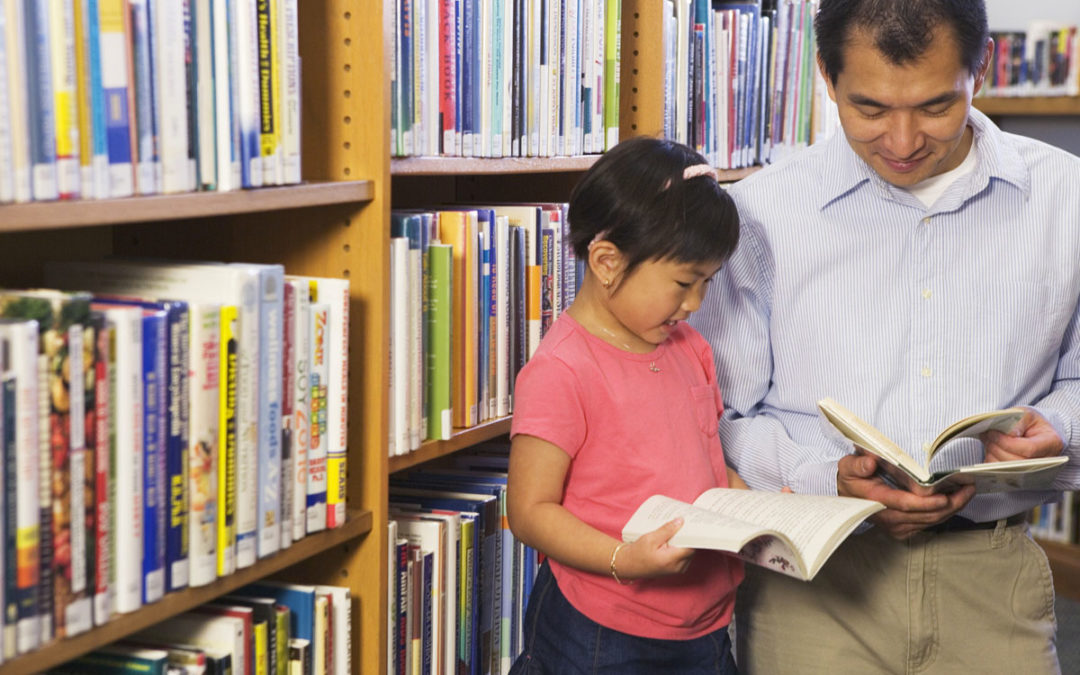
by North Shore Child & Family Guidance Center | Feb 21, 2018 | Blog
February marks National Library Lover’s Month, and there’s an awful lot to love any time of year! Many libraries are not only home to books and other media, but they are centers of the community, providing music performances, meeting spaces, workshops, book groups and many kid- and teen-friendly activities.
But the main focus of libraries has always been on reading, which leads to more than just book smarts—it also results in emotional, social and mental health benefits as well.
“Children learn by role modeling and experience, so parents who are actively involved in reading themselves and reading to their children help to create lifelong readers,” says Dr. Sue Cohen, Director of Early Childhood and Psychological Services at North Shore Child & Family Guidance Center. “But just as important, reading is a wonderful parent/caregiver and child activity that not only promotes literacy, but builds a warm relationship.”
The Guidance Center’s Marks Family Right From the Start 0-3+ Center in Manhasset contains a library stocked with books for children of all ages and on a range of topics, while the waiting area has many different magazines. “We’ve created a space where parents and their children are free to enjoy their time together reading,” says Cohen.
The Guidance Center also runs a book-focused program at the Children’s Center of Nassau County Family Court, which offers a safe and enriching environment for children ages 6 weeks to 12 years while their parents are involved in court business.
“Here at the Children’s Center, staff and volunteers read frequently to children, which calms their fears and anxiety,” says Joan Antonik, Head Teacher at the Children’s Center. “It takes them to an imaginary place of fun through reading. Reading aloud to your children promotes language development and early literacy skills. It gives children an understanding of how stories challenge your imagination and creativity. When parents read to children, it allows for quality time and the enjoyment of stories.”
The Children’s Center makes sure each child goes home with a book to help encourage the reading habit!
Wherever you find your favorite reading spot, you and your children will gain many benefits:
- Reading reduces stress and increases relaxation. Getting absorbed in a good book engages the imagination and stimulates creativity, helping to leave behind the worries of the day.
- Reading helps develop empathy, and empathy is a strong indicator of social and emotional intelligence. As readers get involved in a storyline, they empathize with characters. They can also learn about other cultures, which stimulates the ability to see life from someone else’s point of view.
- Reading helps to improve concentration and memory. According to researchers at Emory University, becoming engrossed in a book enhances connectivity in the brain and improves brain function.
- Books help teach coping skills. Stories can help kids learn how to handle new experiences, especially difficult ones like losing a pet or being teased.
Most of all, reading is fun! So make reading a daily part of your interaction with your little ones, and then watch them blossom!
Note: If you have new or gently used children’s books that you’d like to donate to the Children’s Center, contact Joan Antonik at jantonik12@gmail.com
Sources:
https://readingpartners.org/blog/four-compelling-reasons-shut-off-screen-open-good-book/
https://www.kidcentraltn.com/article/benefits-of-reading-to-your-child
https://www.psychologytoday.com/blog/the-athletes-way/201401/reading-fiction-improves-brain-connectivity-and-function

by North Shore Child & Family Guidance Center | Feb 14, 2018 | Blog
Whether you send cards, chocolates, flowers or none of the above, don’t think of Valentine’s Day as a commercial holiday or one that is only for lovers. Any occasion focused on the expression of feelings of love for the people who are important to you presents a perfect opportunity not only to strengthen emotional bonds but also to boost mental health.
Close, loving relationships have numerous positive effects on the mind and body. Though it’s not a cure-all, studies have shown that love helps decrease stress, depression and anxiety. It also helps improve self-esteem and, consequently, self-care such as healthy eating and exercise.
Research also indicates that high levels of social bonds may result in better prognosis in such conditions as cancer, heart attacks and other illnesses. And the reverse is also true: studies of mortality consistently show that people with the lowest level of involvement in social relationships are more likely to die sooner than those with greater involvement.
So, love—and the wonderful endorphins it produces— is truly a many splendored thing.
Following are some tips on how to spread the love this Valentine’s Day—and just about any day of the year!
- Write your partner, children or other loved one a note saying what you love most about them.
- Be a hugger! Not only will it make you feel closer to the “huggee,” but it will also boost your immune system.
- If you don’t already have one, consider getting a pet. There’s nothing better than coming home to a being who is full of love and affection for you and your family.
- Are you intrigued by meditation? There’s a particular kind, called loving-kindness, that is a wonderful way to heighten your connections not just with those you love but with the world at large.
- And remember, if you are alone this Valentine’s Day, don’t despair. Treat yourself to a favorite activity, whether it’s a bubble bath or some binge watching of your favorite TV show. Loving yourself, as well as loving others, is key to a happy, healthy life. As Mahatma Gandhi said, “Where there is love, there is life.”
Sources:
https://www.ncbi.nlm.nih.gov/pmc/articles/PMC3150158/
https://www.psychiatryadvisor.com/mood-disorders/the-positive-effects-of-love-on-mental-health/article/401655/
https://health.usnews.com/health-news/health-wellness/articles/2016-02-03/the-health-benefits-of-hugging
http://www.apa.org/news/press/releases/2011/07/cats-dogs.aspx
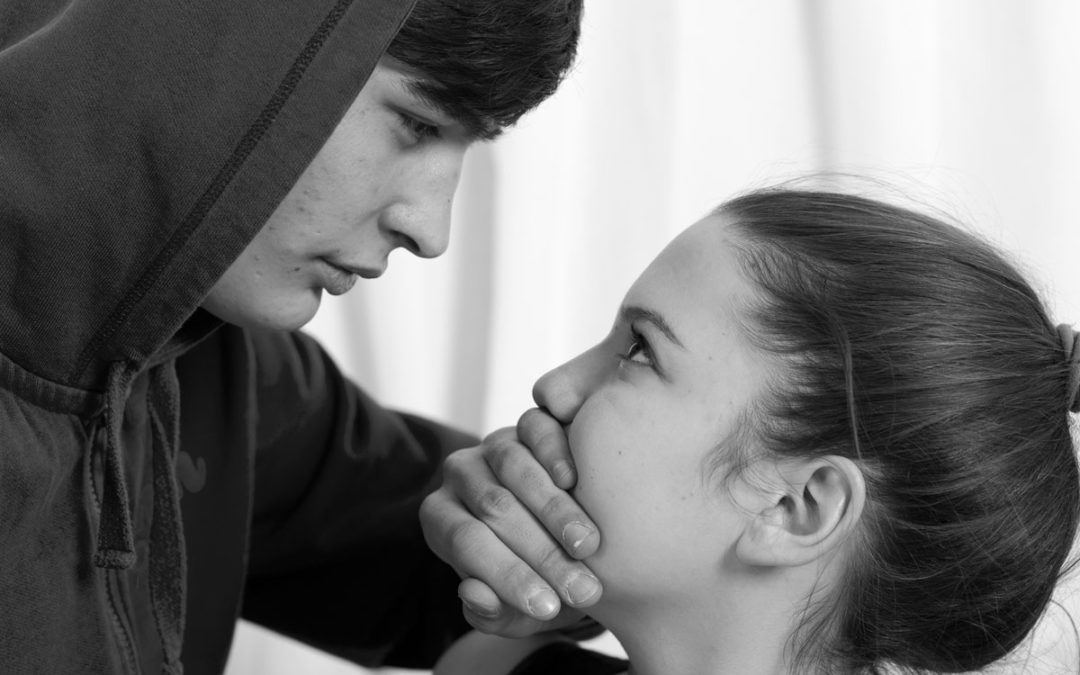
by North Shore Child & Family Guidance Center | Feb 8, 2018 | Blog
Recently, a sixth-grade girl was seen through North Shore Child & Family Guidance Center’s Triage & Emergency Unit, which offers a rapid response to psychiatric emergencies. She was being cyberbullied by some boys in her school who were spreading the untrue rumor that she was pregnant. The abuse had gotten so bad that she was expressing suicidal thoughts.
Abusive behavior among teens and pre-teens is nothing new, but in the age of technology, abusers have a new tool that can spread their hurtful, hateful messages like wildfire. But whether it’s through social media or in person, the problem is extremely damaging to its victims, and can even turn deadly.
“The goal of perpetrators of verbal and physical abuse is to make their partners feel worthless so they can be controlled,” says Elissa Smilowitz, Director of Triage and Emergency at the Guidance Center. “The abuser, who often has low self-esteem, is threatened by any sign of independence from their significant other, and that jealousy causes them to engage in physical, sexual, psychological and/or emotional violence.”
February has been designated as Teen Dating Violence Awareness Month, which acknowledges how serious and widespread a problem this is. According to the Centers for Disease Control and Prevention, among high school students who dated, 21% of females and 10% of males experienced physical and/ or sexual dating violence. In addition, 1 in every 5 students between the ages of 11 and 14 say their friends are victims of dating violence, with nearly half experiencing verbal abuse.
Common warning signs of dating abuse include:
Checking cell phones, emails or social networks without permission
Extreme jealousy or insecurity
Constant belittling or put-downs
Explosive temper
Isolation from family and friends
Making false accusations
Constant mood swings towards you
Physically inflicting pain or hurt in any way
Possessiveness
Telling someone what to do
Repeatedly pressuring someone to have sex
Though such behaviors are clearly unacceptable, it can be difficult to convince a teen that their partner is being abusive, according to Smilowitz. “We have to help them come to the conclusion on their own that this is an unhealthy relationship and that it’s OK to seek out help. Through individual and group therapy, we can help give them the strength and tools to recognize that their relationship is toxic and learn what a loving, respectful relationship is like.”
Smilowitz advises parents to monitor their kids’ social media usage, and to keep an open dialogue. “If you notice changes in behavior, such as isolation and depression, ask them directly what’s going on. They need to know you are there to listen to them without judgment.”
If you are concerned that your child or teen may be the victim of abuse, call North Shore Child & Family Guidance Center at (516) 626-1971. We guarantee to see you within 24 to 48 hours.
You can also call the 24-hour hotline at the Safe Center LI at (516) 542-0404.
Sources: www.cdc.gov/violenceprevention/intimatepartnerviolence/teen_dating_violence.html
https://nrcdv.org/dvam/home
http://www.breakthecycle.org/warning-signs
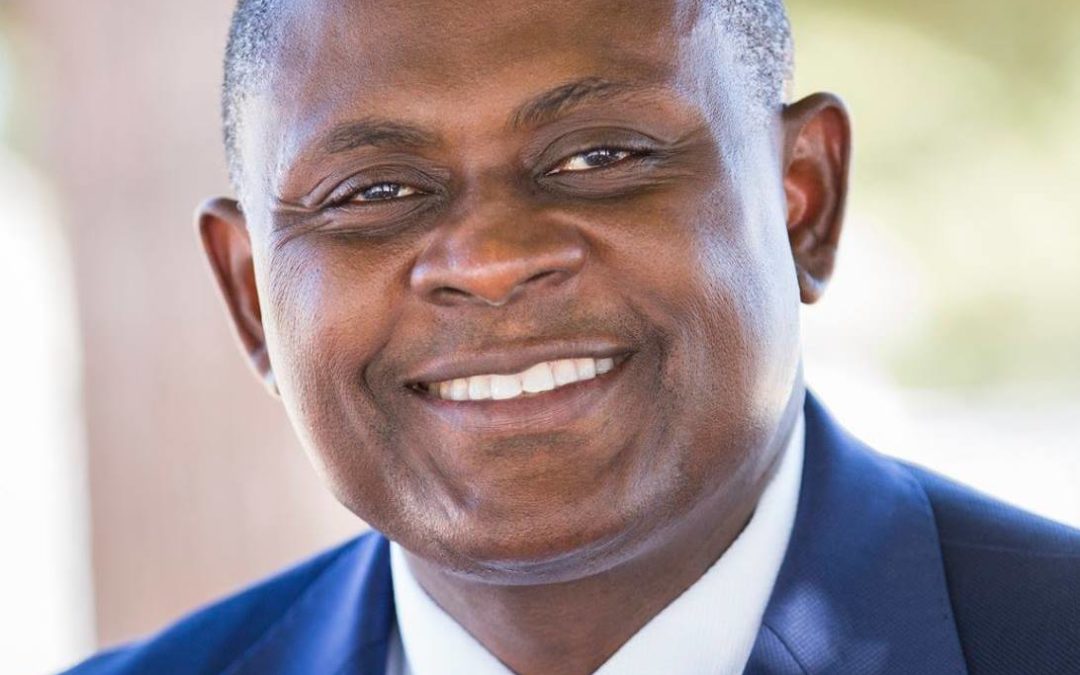
by North Shore Child & Family Guidance Center | Feb 1, 2018 | Blog
By Andrew Malekoff
Today is the beginning of Black History Month, when we honor the lives and stories of black heroes, both well-known and not so well-known. And in just a few days, most TVs in America will be tuned to Super Bowl 2018.
What’s the connection? I had the privilege two years ago of meeting a true hero: Dr. Bennet Omalu. He was the keynoter at the Head Injury Association’s Awareness Sports Forum at the Hyatt Regency Long Island.
In 2002 Dr. Omalu discovered the presence of degenerative disease in the brain of National Football League player Mike Webster. He named the brain disease chronic traumatic encephalopathy, known as CTE. His discovery has proven to be a powerful pebble that has generated waves throughout the troubled waters of youth, college and professional football, as well as other contact sports.
Dr. Omalu was portrayed by Will Smith in the 2015 film Concussion, based on his book of the same name. Prior to that, he was prominently featured in the public affairs television program Frontline and in the book, League of Denial: The NFL, Concussions and the Battle for Truth.
Although the focus of the head injury forum was to raise awareness to protect school-aged athletes from concussions, Dr. Omalu transcended his role as a forensic scientist, inspiring an audience of several hundred people with his deep faith and fortitude.
He began his remarks by recalling that he was born in war-torn Nigeria and describing how he suffered as a child from malnutrition. He revealed that, “Because of the consequences of war, I became a weakling and introvert who was ridiculed.”
The turning point in his life came, he remembered, when he realized that “with knowledge you can do all things.” This realization ignited what became a lifetime thirst for learning and quest for truth. In fact, he has earned eight degrees and certifications.
Dr. Omalu explained that both science and faith seek truth. The role of faith, he said, “is the manifestation of things we do not see,” which was the case with Mike Webster and the rest of the world. Dr. Omalu said that it was his deep faith in humanity that led him to wonder about the cause of Webster’s destitution, deterioration and death, and, to “speak” to Webster’s spirit during the autopsy.
“Whatever happens to the least of us happens to all of us,” he told the rapt audience in Hauppauge; and, “what we do for the least of us, we do for all of us.” And, so began his spiritual relationship with the deceased Mike Webster.
Omalu has faced enormous obstacles as a scientist. He shared that he was smeared by the National Institute of Health, which said he was not a reputable doctor. And he was also defamed by the NFL, which did all they could to stonewall his discovery and disassociate the notion that repeated blows to the head were the cause of a degenerative brain disease that led to the premature deaths, including suicides, of scores of former players and counting.
Dr. Omalu spoke to the challenge of working in a context of “conformational intelligence” which he explained as when one’s “mind conforms to the expectations of society” and not necessarily the truth. “How does conformational intelligence hold down a society?” he asked.
This amazing man—who portrayed himself as an “outlier,” someone who operates outside of the box—concluded his remarks by stating, “One person can ignite a fire that can light the entire forest.”
We owe Dr. Omalu a debt of gratitude for his discovery and for his quest for truth, against all odds.
We must demand that those in power in youth, interscholastic and intercollegiate sports protect our children; and we must help our children, from an early age, to think critically and to develop the good sense and courage, without shame, to speak the truth and break the silence.
Bio: Andrew Malekoff is the Executive Director of North Shore Child & Family Guidance Center, which provides comprehensive mental health services for children from birth through 24 and their families. To find out more, visit www.northshorechildguidance.org

by North Shore Child & Family Guidance Center | Feb 1, 2018 | Blog
By Andrew Malekoff
Today is the beginning of Black History Month, when we honor the lives and stories of black heroes, both well-known and not so well-known. And in just a few days, most TVs in America will be tuned to Super Bowl 2018.
What’s the connection? I had the privilege two years ago of meeting a true hero: Dr. Bennet Omalu. He was the keynoter at the Head Injury Association’s Awareness Sports Forum at the Hyatt Regency Long Island.
In 2002 Dr. Omalu discovered the presence of degenerative disease in the brain of National Football League player Mike Webster. He named the brain disease chronic traumatic encephalopathy, known as CTE. His discovery has proven to be a powerful pebble that has generated waves throughout the troubled waters of youth, college and professional football, as well as other contact sports.
Dr. Omalu was portrayed by Will Smith in the 2015 film Concussion, based on his book of the same name. Prior to that, he was prominently featured in the public affairs television program Frontline and in the book, League of Denial: The NFL, Concussions and the Battle for Truth.
Although the focus of the head injury forum was to raise awareness to protect school-aged athletes from concussions, Dr. Omalu transcended his role as a forensic scientist, inspiring an audience of several hundred people with his deep faith and fortitude.
He began his remarks by recalling that he was born in war-torn Nigeria and describing how he suffered as a child from malnutrition. He revealed that, “Because of the consequences of war, I became a weakling and introvert who was ridiculed.”
The turning point in his life came, he remembered, when he realized that “with knowledge you can do all things.” This realization ignited what became a lifetime thirst for learning and quest for truth. In fact, he has earned eight degrees and certifications.
Dr. Omalu explained that both science and faith seek truth. The role of faith, he said, “is the manifestation of things we do not see,” which was the case with Mike Webster and the rest of the world. Dr. Omalu said that it was his deep faith in humanity that led him to wonder about the cause of Webster’s destitution, deterioration and death, and, to “speak” to Webster’s spirit during the autopsy.
“Whatever happens to the least of us happens to all of us,” he told the rapt audience in Hauppauge; and, “what we do for the least of us, we do for all of us.” And, so began his spiritual relationship with the deceased Mike Webster.
Omalu has faced enormous obstacles as a scientist. He shared that he was smeared by the National Institute of Health, which said he was not a reputable doctor. And he was also defamed by the NFL, which did all they could to stonewall his discovery and disassociate the notion that repeated blows to the head were the cause of a degenerative brain disease that led to the premature deaths, including suicides, of scores of former players and counting.
Dr. Omalu spoke to the challenge of working in a context of “conformational intelligence” which he explained as when one’s “mind conforms to the expectations of society” and not necessarily the truth. “How does conformational intelligence hold down a society?” he asked.
This amazing man—who portrayed himself as an “outlier,” someone who operates outside of the box—concluded his remarks by stating, “One person can ignite a fire that can light the entire forest.”
We owe Dr. Omalu a debt of gratitude for his discovery and for his quest for truth, against all odds.
We must demand that those in power in youth, interscholastic and intercollegiate sports protect our children; and we must help our children, from an early age, to think critically and to develop the good sense and courage, without shame, to speak the truth and break the silence.
Bio: Andrew Malekoff is the Executive Director of North Shore Child & Family Guidance Center, which provides comprehensive mental health services for children from birth through 24 and their families. To find out more, visit www.northshorechildguidance.org

by North Shore Child & Family Guidance Center | Jan 25, 2018 | Blog
BY CAROL IRIZARRY
The following is an excerpt from a new book edited by our Executive Director, Andrew Malekoff, called Group Work Stories Celebrating Diversity. To learn more about the book or to purchase it, click here. This story was written by Carol Irizarry.
Edie was only 12 years old and had the deepest, most delicate brown eyes that I had ever seen. We sat by the pool on the last day that I would spend with my group, both of us feeling sad and not speaking. I felt tears on my arm and realized that she was crying. Her voice was hesitant and soft but it cut directly into my heart. “Please Carol, just don’t forget us.”
How could this beautiful young Puerto Rican girl possibly know that during all the years since that moment I could not think of this scene without tears coming to my eyes? Forget her, forget the Watusi girls? Never. They changed me forever.
I had just graduated with my MSW in group work and this was my first job, my first pay check, my first professional role, my first apartment with friends in New York City and my first group. Preadolescent girls, from Hispanic and African-American backgrounds, asking for help from the settlement house to form a club, which they wanted to call the “Watusi” girls.
They were suspicious when I was “assigned” to them and with good reason. I was green. Naive about New York City life and the issues which these girls encountered on a daily basis. Naïve also about myself and my role as a social group worker. So they went to work on me – imitating my every gesture – my walk, my talk and my gestures. Mocking Carol was their favourite game. “It’s only a joke,” the president reassured me. “We do that with everyone.”
I took the turn towards humour and instead of reprimand l laughed with them at my silly self. It broke the ice.
Subway rides were a nightmare as the girls made rude comments to the other passengers. They were kicked off and I left with them. Then the rebukes started as we walked back in disappointment at the missed trip. “You should have stopped us from being bad on the subway.” I replied, “You hate people who tell you what to do and I am not a teacher after all. I am a social worker.” Confusion emerged but now they listened seeing me in a different light. This was how talking together began. Boys were top conversational subjects but school, jobs, parental controls, sex and fear of pregnancies all spilled out.
Their insights into their situations were amazing. They taught me how they survived with talents such as reading people’s real intentions and trusting their own instincts. They showed me their resilience, which was often based on getting up again after being knocked down, literally or symbolically.
Above all I discovered how the girls relied on each other for protection and emotional well-being. They displayed a loyalty to their Watusi club that surprised me in its commitment and depth. The fought each other with the same intensity and punished those who did not remain loyal but they looked out for each other in all situations – another major component of their resilience. And they never tired of teaching me something more about groups and my interactions.
They challenged me to be more real, not to evade, not to hide behind professional language, not to hedge my opinions and most importantly to integrate my professional and personal roles. They could see through any phony response in five seconds flat. Their questions were incessant. Did I like really them? Would I lend them money? Where did l learn Spanish? Would I take a girl home if her mother died? Did I have a boyfriend? Did I have Puerto Rican friends? Did I have Black friends? And eventually – best of all, what did a social worker do anyway?
I struggled with answering their concerns while staying within my professional role. Each question challenged me to stay true to my reason for being a social group worker and at the same time to give them an answer that displayed my genuineness, revealing myself as a real person. It was only in answering these questions directly that they began to move into more threatening subjects and raise their encounters around race and prejudice which they had all experienced. My immediate reactions were always crucial – the pain I felt at their stories – the anger at their hurts. They needed those emotions and it helped them to view my unadulterated reactions. They also felt conflicted since it was so easy to see “white crackers” as alien and feared, while liking me placed them in peril. The taboo subject of race emerged more frequently and I needed to help them sort out the conflict rather than suggest solutions and I needed to avoid being defensive when I was labelled as one of the white oppressors. I kept reminding myself to focus on their needs not mine, on why they had wanted to form a group and what it meant to their lives.
As for the individual Watusi girls, I stood in awe of their strength and their ability to find ways to live creative lives within their environment. They were powerful girls – rich in character, energy, humour and resolve. I shared in their adventures and challenges. And I fell in love with them.
I learned social work. I learned group work. I learned about myself and I gave myself to these girls with whom I walked the streets of New York. These were the same girls who teased me mercilessly until the day I left, who cried on my shoulder about family problems and fights with friends, who called me “white cracker” and then threw their arms around me when I came back from a holiday. They were the same girls who all slept touching me, with every single girl holding onto a part of me when we camped on Bear Mountain and slept outside. Tough on the streets of East Harlem, but afraid of a dark night without streetlights.
I see their faces clearly and vividly. Edie, Elba, Cuni, Maria, Norma, Shirley, Brenda, Naomi and Miranda. I mix up their real names with the code names that I gave them in writing and talking about them over the decades but their faces remain young, vibrant and distinct before me now – years after they would have grown to be mothers and grandmothers.
“No Edie” I replied, “I will never forget you. And I never have. You showed me strength and vulnerability – and gave me trust and affection. You came with the other girls to my wedding. Still a group but with your new worker and I saw your beaming faces as a precious part of that celebration – a gift of lasting influence, frozen in the picture frames.
You and your friends moulded me and sculptured me into the social worker that I became and remained. It was through working with you and the other Watusi girls that the words I had read in textbooks transformed in actions in the real world. And I learned that all the social work theories, skills, techniques, ideas and insights however relevant, must be carried out through a genuineness of self and a feeling of true affection. The most challenging skill of all is to be real and professional at the same time and to hold that delicate balance.
I close my eyes and I can feel again Edie’s tears on my arm as she sits by the pool. I wish I could tell her and the other Watusi girls of their effect on my development and my gratitude for the social group work they taught me. “No Edie I have never forgotten you and I never will.”

by North Shore Child & Family Guidance Center | Jan 17, 2018 | Blog
We’re all accustomed to opening up the paper or turning on the television and seeing reports of bad news—fires, blizzards, mudslides, and on and on.
But every once in a while, an uplifting story sneaks into the mix. Recently, a newscaster reported on how some teenagers shoveled the driveway and porch of an older neighbor who hadn’t even asked for help. And they did it for free.
Their motivation? They simply wanted to do something that was kind for someone in need. The added benefit that they hadn’t expected: They felt good about themselves for helping out.
Volunteering is known to have positive effects on everyone, both the giver and receiver. People often say they “get more than they give” when they volunteer. It’s known to play a big role in creating a happier, healthier life.
Following are some of the reasons volunteering is beneficial:
- It reduces the risk of depression by helping you make new friends and building a support network of like-minded people.
- It boosts your self-esteem and helps you develop better communication skills.
- Volunteering helps you stay active and engaged with the world, and depending on what kind of volunteering you do, it could even help you stay more physically fit, including lowering your blood pressure!
- It exposes you to new experiences, giving you insight into the world around you and all the opportunities that are out there just waiting for your energy and dedication.
- It helps reduce stress and loneliness by giving you a feeling of purpose and connection.
- The symptoms of mental health issues such as Post-Traumatic Stress Disorder, Obsessive Compulsive Disorder, anxiety and other conditions have been shown to decrease when people volunteer.
- Volunteering gives you perspective, helping you realize that there are others in the world struggling with issues, just like you.
- The bottom line: Volunteering is fun!
To find out about volunteer opportunities near you, visit www.createthegood.org or www.volunteermatch.org
Sources:
https://www.health.harvard.edu/blog/volunteering-may-be-good-for-body-and-mind-201306266428
https://www.thebalance.com/unexpected-benefits-of-volunteering-4132453
https://www.theguardian.com/society/2004/sep/28/volunteering.uknews
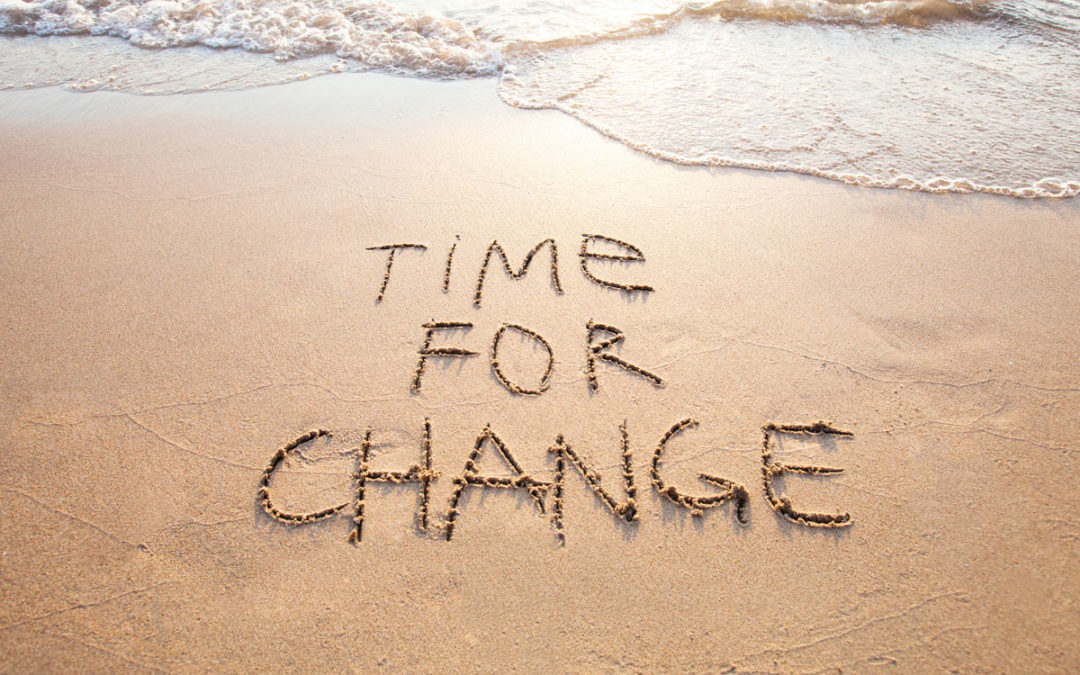
by North Shore Child & Family Guidance Center | Jan 11, 2018 | Blog
Monday is a special holiday: Martin Luther King Day. Dr. King was known for many things, chief among them his passionate voice that called for a nonviolent but forceful response to injustice. He faced many obstacles, but continued until his last breath to speak his truth, regardless of the consequences.
In the last few months, we’ve also seen another response to injustice, with women speaking out about sexual harassment and finally being heard and believed. It takes a lot of bravery to speak your truth when it’s something that is so personal and that has been dismissed, minimized or ridiculed in the past by the larger culture.
We have also seen a shift as more people speak about their mental health issues. That’s not easy to do in a culture where a long-held theme is that, if you’re feeling down, you just need to “pick yourself up by your bootstraps.”
At North Shore Child & Family Guidance Center, our mission is to bring hope and healing to those experiencing mental illness and addictions issues, regardless of their ability to pay. But we also have another mission: To speak out against the stigma associated with having a mental health or chemical dependency issue.
Guidance Center Executive Director Andrew Malekoff has been advocating for many years regarding this issue. Below is a column he wrote for Anton Media.
“When we hear that our neighbor’s teenage son has been diagnosed with cancer, or that our colleague’s newborn has a heart defect, we shed some tears—and then we move into action. We bring meals; we offer to take their other kids to soccer games or piano lessons; we raise money so the parents can stay home from work to care for their ailing children.
But when we learn that our daughter’s best friend has been hospitalized for depression, or that a boy on our son’s basketball team has stopped going to school because of severe anxiety, we’re often at a loss as to how to respond.
Here’s a fact that may surprise you: Although more children suffer from psychiatric illness than autism, leukemia, diabetes and AIDS combined, only one of five with an emotional disturbance gets help from a mental health specialist. Moreover, 50 percent of serious mental illness occurs before the age of 14.
People with mental health problems and addictions, along with their families, often suffer in silence, while people with physical health problems evoke the sympathy and support of others. Why do we continue to treat illnesses above the neck differently than illnesses below the neck?
The sad truth is that there’s still a widespread stigma when it comes to mental health. The result? Parents who need help often wait months and even years to make that first phone call. A parent whose child is diagnosed with cancer doesn’t wait to ask for help. Waiting only happens with mental illness and addiction.
Fortunately, more than 60 years after our founding, North Shore Child & Family Guidance Center is still here to fight that stigma and provide help to children in need. Let me share a few of their stories.
We met six-year-old Jerome soon after he attempted to jump out a window because, as he said, “Nobody loves me.” Fifteen-year-old Celeste said the reason that she cuts her arms until they bleed is not to take her life, but to lower her blood pressure. And 14-year-old Maria told us that she lives in a house with a revolving door welcoming men who touch her.
Depression, anxiety, fear, child abuse, school refusal, bullying, isolation, drug addiction, domestic violence . . . we receive more than 100 calls a week, and increasing numbers are emergencies.
All across Long Island, mental health agencies are shuttering their doors, or they’ve been acquired by corporate entities with no roots in the community. That’s tragic, because community-based mental health organizations are as essential to the health and well-being of our children as hospitals or schools.
What can you do? First, tell your representatives that you value the mental health organization that serves your community and would like their support to ensure its future. And if you know someone whose child is suffering from a mental health issue, don’t ignore them. Make that phone call. Let them know you care.”
For information on what the Guidance Center is doing to combat stigma and to learn how you can help, visit our webpage and click on Project Access, a year-long study we conducted that looks at the difficulties in accessing mental health care, including the problem of stigma.

by North Shore Child & Family Guidance Center | Jan 3, 2018 | Blog
We’ve only officially been in winter for a few weeks, but many people start feeling the effects of less daylight and colder temperatures starting around October or November.
According to the National Institutes of Health, Seasonal Affective Disorder (SAD) is a type of depression that fluctuates according to the seasons, typically starting in the late fall and early winter and going away during the spring and summer.
About six percent of the U.S. population, primarily in northern regions, is affected by SAD in its most marked form, characterized by feeling depressed and hopeless nearly every day, along with an inability to enjoy activities, difficulty concentrating and feeling tired or agitated. Another 14 percent suffers from a lesser form of SAD, known as winter blues, whose symptoms include low energy, weight gain, craving carbohydrates and social withdrawal.
Here are some strategies to get you through the winter doldrums, whether you experience full-blown SAD or the more mild winter blues:
- Get as much direct exposure to sunlight as possible.
- Since being out in the sun can be difficult this time of year, either due to cold temperatures or long work days inside, consider purchasing artificial “sunbox” lights. Their special fluorescent tubes mimic the sun’s beneficial rays (plain lights don’t have the same effect).
- Keep or start an exercise routine. If it’s not too cold out and it’s a sunny day, try to walk outside to reap the benefits of being in natural sunshine—but even if you work out indoors, it will have a positive impact on your mood.
- Turn up the heat (between 64 and 70 degrees) and drink hot beverages.
- Eat healthy foods, with a focus on fruits and vegetables. That’s good advice any time of year, but especially important in winter when your cravings for sugar and carbohydrates tend to increase.
- Don’t give in to the urge to isolate. Seeing friends and attending social functions are crucial to putting a damper on the blues.
- Keep active by engaging your creative side, whether it be taking up a new hobby or reintroducing a former favorite pastime. Take advantage of classes at your adult education center or library. Not only will your spirits pick up but you may make some new social connections.
- Take up meditation and other mindfulness-based practices. You can find literally thousands of guided meditations on a free app called Insight Timer.
Finally, if your depression is severe and impacting your ability to function, it’s important that you seek help from a mental health professional. To contact North Shore Child & Family Guidance Center, call (516) 626-1971.
Sources:
https://www.ncbi.nlm.nih.gov/pmc/articles/PMC2686645/
https://www.nimh.nih.gov/health/topics/seasonal-affective-disorder/index.shtml
https://www.webmd.com/depression/features/beating-winters-woes#1
https://www.nhs.uk/Conditions/stress-anxiety-depression/Pages/dealing-with-winter-blues-sad.aspx

by North Shore Child & Family Guidance Center | Dec 28, 2017 | Blog
Tis the season to make New Year’s Resolutions. Most lists contain wishes to lose weight, exercise, get a promotion at work…all very worthwhile goals. But what’s missing from many lists is what you can do to promote your mental health and that of your loved ones. Here are a few ideas:
- Start an exercise program. Yes, we just said that’s on everyone’s “usual” list of resolutions, but exercise benefits your brain as much as your body. Studies indicate that a minimum of a half hour of cardio three times a week boosts mental health by decreasing anxiety and depression while improving self-esteem and cognitive function. Exercise also increases self-confidence.
- Exercise your creative muscles. Scrapbooking is one hobby that anyone can do, and if you use it to express your fondest desires and favorite things, it will help you take strides in the direction of those dreams. Other possibilities include writing poems, painting or playing an instrument. Remember, the goal isn’t perfection, just free and playful expression!
- Express your love and appreciation to those in your life. Think your spouse or kids already know you love them? Use your words and your actions to get the message across every day. Close and happy relationships are key to living a healthy and fulfilling life.
- Turn off your electronics and spend an “old-fashioned” day playing board games, taking walks, meeting a friend for coffee—whatever activity brings a smile to your face. Share this practice with your kids and teens, whose brains are still developing and are more susceptible to the negative impacts of screen time overload.
- Spend some time with your favorite four-footed furry friend. Having pets helps prevent loneliness and anxiety—and studies show that being with animals lowers the stress hormone cortisol and boosts the happy hormone oxytocin. Animals are great therapy for kids, too; they can help tame fear and anxiety. If you don’t have a pet, consider volunteering at an animal shelter.
- Think meditation is too difficult, and that you can’t sit still long enough for it to work? Then try walking meditation. Head outside (bundle up if needed) and take a walk through your neighborhood or a nearby park. The buzzword is “mindfulness,” and it’s simply training your brain to stay present in your surroundings rather than fearing the future or obsessing about the past.
Happy, healthy New Year to all!
Sources:
https://www.ncbi.nlm.nih.gov/pmc/articles/PMC1470658/
http://time.com/4728315/science-says-pet-good-for-mental-health/

by North Shore Child & Family Guidance Center | Dec 21, 2017 | Blog
When the kids are on break over the holidays, many parents also take time off. Some plan vacations, while others choose “staycations.” Either way, what’s most important is that you use the time to create fond memories with your family.
Here are some ideas for a happy holiday break for the whole family:
- Eat dinner together. While this is a great goal throughout the year, activities such as sports, clubs, work obligations and the like can make family meals a rare event. But the benefits are so worthwhile you may decide to make this a more frequent part of your daily routine. According to an article in CNN, studies show that kids who eat regularly with their families experience less depression, fewer thoughts of suicide and fewer eating disorders. They’re also less likely to experiment with smoking, drinking and drugs. When a child is feeling down, eating with the family can be a time of great bonding, helping break the cycle of depression.
- Read all about it! Spending time reading to your kids if they’re younger or side by side if they’re older is not only a great way to pass the time and enter the world of imagination, but it’s also a great tool for children’s development. Studies indicated that reading to children even as young as newborns helps them with speech and with bonding with their parents. For kids who already know how to read, reading with their parent or caregiver creates a close relationship and helps them understand the world around them. Not sure what to read? Your library is the perfect place to visit and get advice from the experts who work there. (Also, see if your library has family-friendly activities over the holiday break.)
- Look to the stars. Sure, it may be a bit chilly out there, but bundle up, head outside and look up. You can use an app like Google Sky to learn about stars and planets, or just use the opportunity to enjoy nature and talk about the magnificence of the universe. Don’t forget the hot cocoa!
- Break out the board games. Playing games isn’t just a way to have fun, though that is a big part it! But it can also help your children release some stress, learn skills that could benefit them academically and socially, and enhance communication skills. Click here to learn about 50 great board games, both classic and new.
- Get crafty. Even if you’re not an “artsy” kind of parent, you can find numerous arts & crafts project online that will be a wonderful way to spend some time with your kids. Scrapbooking is a great activity that will reap benefits for years to come. Visit your local craft store for kits, and gather your children to print out their favorite photos. You can choose to create a themed scrapbook of one of your vacations, or a “wish list” with photos of all your favorite things. Here’s a great site to check out if you’re new to scrapbooking.
Whatever you choose to do, make sure that you include your kids in the planning. The main idea is to have FUN with your FAMILY! Happy vacation!
Sources: http://www.cnn.com/2011/10/25/living/family-dinner-h/
http://www.friendshipcircle.org/blog/2015/12/21/10-winter-break-activities-for-emotional-bonding-with-your-special-child/
https://www.craftsy.com/blog/2015/03/scrapbooking-ideas-for-beginners/
http://www.bestproducts.com/parenting/kids/g985/best-family-board-games/
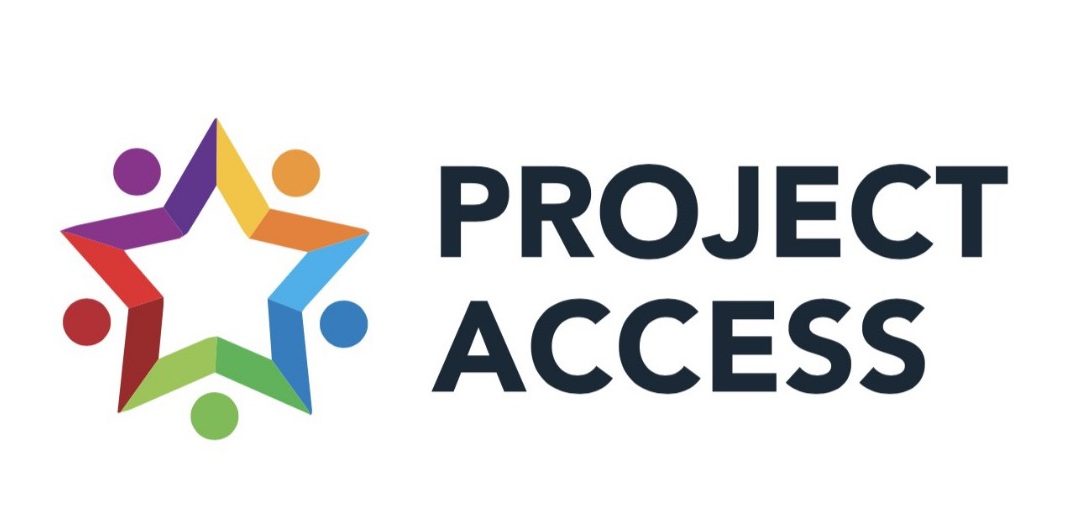
by North Shore Child & Family Guidance Center | Dec 14, 2017 | Blog
It’s a heartbreaking scenario that is far too common: Someone makes the difficult decision to seek out professional help for a mental health or substance abuse problem for themselves or their loved one and is faced with a myriad of roadblocks. They start calling providers on their insurance plan and find that they are not taking new patients, or they no longer accept insurance. And the cost of paying out of pocket is too much for many to afford.
The result: It takes people weeks if not months to find help—or worse, they give up entirely.
At North Shore Child & Family Guidance Center, we’ve heard these stories over and over again. It’s a crisis situation that could have life-threatening consequences, especially during these times when opioid addiction is at epidemic proportions.
“We’ve always believed that part of our role is to advocate for patients’ rights,” says Andrew Malekoff, Executive Director of North Shore Child & Family Guidance Center. “To accomplish the change that is needed, we knew we had to define the problem in a way that those in power can understand—and can’t ignore.”
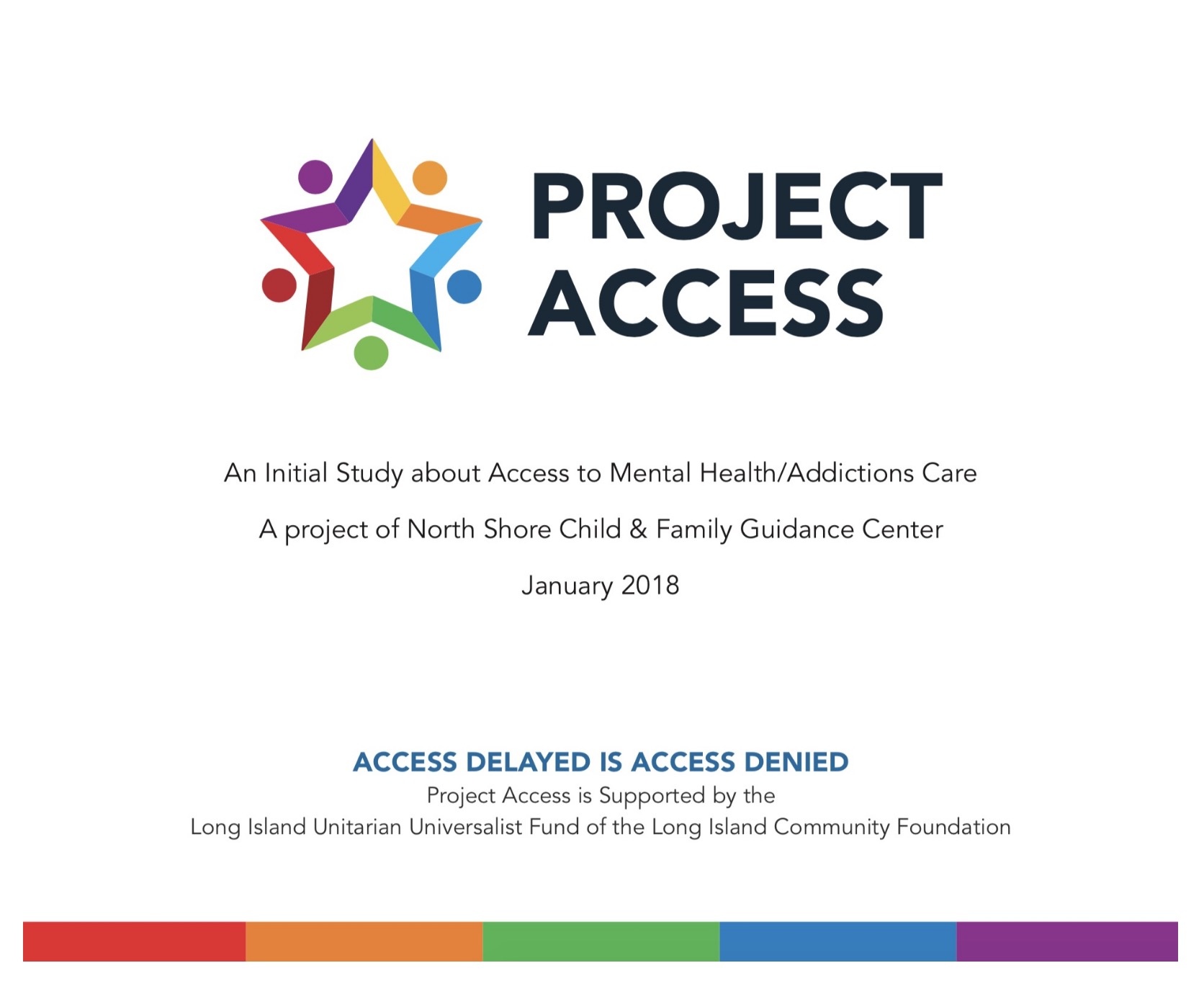
The Guidance Center joined with researchers to create Project Access, a year-long research study that examined the difficulty in finding timely, quality and affordable mental health and addictions care. (Click here to read the report.) Project Access compiles the data necessary for legislators to use as evidence to show that there has been an egregious error in accessing adequate mental health care.
“Even though the government is legally bound to have adequate networks of care, Project Access shows that they fall far short of that mandate,” says Malekoff. “It’s incumbent upon all of us to advocate for change. People’s lives are at stake.”
Exacerbating the problem of individuals finding appropriate providers for mental health and addictions care is stigma and the shame it generates, notes Malekoff. “If someone’s child has cancer, they won’t hesitate to call the doctor, but because of the stigma surrounding mental health, it makes it very difficult for them to reach out. Once they make the call, the support needs to be there.”
So, what can you do to make a difference? Contact your local, state and federal politicians and tell them to call on the New York State Department of Financial Services to launch a thorough investigation of this issue. Send them the link to the Project Access report, and share your stories of how difficult it was to get mental health or addictions care for your loved ones.
Be an advocate for children, individuals and families who desperately need care. We need you to stand up with us.
Contact the Governor’s Press Office:
Phone: 518-474-8418
Email: Press.Office@exec.ny.gov

by North Shore Child & Family Guidance Center | Dec 6, 2017 | Blog
Whether you celebrate Hanukkah, Christmas, Kwanzaa or another holiday this time of year, one thing is for certain: You (hopefully) have fond memories of the traditions that your family followed when you were young.
There are several ways in which celebrating your family’s own unique traditions are beneficial to you and your children. First, holidays typically mean the coming together of family and friends with the intention of sharing loving, joyful feelings and rituals.
“The holidays are a great time to help your child connect to elders in the family,” says Regina Barros-Rivera, Associate Executive Director of North Shore Child & Family Guidance Center. “If your child has a hobby or activity that they can enjoy with their grandparents, they can create long-lasting memories.”
Cooking was the activity that bonded Barros-Rivera’s son to his grandmother, and the joy born of those early experiences has lasted throughout many years. “He’s 26 today and loves to join the family in preparing special holiday meals. His memories of my mother are forever special, and the moments for her were priceless.”
Another great way to build connections with significant others in the family is through storytelling. “That’s a wonderful way of giving rooted, positive foundations for present and future relationships,” says Barros-Rivera. Consider videotaping these conversations so you can hold onto them when the storyteller is no longer with you.
Although your family may have many holiday traditions in place, here are five ideas for creating new special memories that will carry over for generations:
- Ask your family how they can help others during the holiday season. That might be sending cards to soldiers, working in a soup kitchen or gathering warm coats for those in need. Creating a tradition of giving may be the most important lesson you impart to your children.
- Far away from family during the holidays? Why not open your house to others who may be solo during this season and host a potluck? No one should be alone during this time of celebration.
- Find out how other cultures all around the world celebrate the season. You might even want to add one of their rituals to your own.
- One of the nicest things about the holidays are the sometimes elaborate displays put up by your neighbors. Take a walk or a drive (bring the hot cocoa along) and take in the beauty that comes only during this time of year.
- Does Grandma have enough mittens to last a lifetime? Instead of giving tons of gifts, consider donating to your family member’s favorite charity. It just might be their very favorite gift of the season!

by North Shore Child & Family Guidance Center | Nov 21, 2017 | Blog
The holiday season is fully upon us, with the push to buy, buy, buy at its peak. Traditional and social media are flooded with ads for the latest and greatest toys and technology. People slept overnight to get the best Black Friday deals, and many shopped on Thanksgiving day itself. The message is that new “stuff” is what the season is all about.
It’s normal for youngsters to be excited at the prospect of receiving a bounty of gifts and gadgets in the coming month. But is the message that “more is better” the one we want our kids to take to heart?
Following are some helpful practices that you can use all year long to help your children cultivate gratitude.
- Have you been slipping on your own gratitude practice? Your kids notice what you do, so don’t let the “little” things slide. Be a role model. Remember to say thank you when someone holds the door open or to praise your kids when they do something kind and generous. Instead of telling them to be grateful, focus on showing them how it’s done.
- It is OK, however, to remind your kids in a gentle and loving way that you appreciate when they acknowledge what you or others do for them. It’s easy for family members to take each other for granted, so when you put a nice meal on the table or do their laundry, encourage them to get into the habit of saying thanks—and remember to do the same for them.
- It’s not unusual for family and guests to have given thanks on Thanksgiving, but why make it a once-a-year practice? Each night at dinnertime, ask your kids what they were grateful for that day, and share your own feelings of gratitude.
- Tired of the same old routine of running yourself ragged trying to find that popular holiday toy and then collapsing at the end of an exhaustive day of shopping? Make it a season of true giving by cutting down on the shopping mania and instead volunteering all through the holiday season. Look into what houses of worship or food kitchens are doing, and bring along the kids to help serve others. It’s a powerful reminder that not everyone has family to be with or food to eat, and that they have the power to make a difference.
- When gifts do begin arrive from aunts, uncles and other friends and family, make a fun project out of writing thank you notes. The practice provides another lesson of expressing gratitude to someone who has done something thoughtful for them.

by North Shore Child & Family Guidance Center | Nov 16, 2017 | Blog
With Thanksgiving just one week away, the holiday season is about to launch into full gear. For all parents and caregivers, this joyous time can also be filled with lots of tension and anxiety. Add to that dealing with children or teens with mental health issues, and it all can seem overwhelming.
Here are 10 tips on making the holiday season more about giving and celebrating than about consumerism and stress.
- Are you hosting Thanksgiving this year? Make it a collaborative effort and ask each guest to bring a dish—but find out ahead of time what they’re planning so you don’t end up with five dishes of Brussel sprouts!
- Thanksgiving is known not only for stuffing but for overstuffing. Avoid a bloated belly by eating some very small meals before the official feast starts. Starving yourself will only lead to excessive consumption.
- Put the “thanks” into Thanksgiving by asking each member of your festivities to mention at least one thing that they are grateful for this year.
- Instead of buying holiday gifts for every relative, offer to donate to a cause in their name. That way, Aunt Alice doesn’t get yet another pair of gloves or a scarf, and her favorite charity will be a winner!
- Speaking of generosity, make a date with your children to go through their old toys and donate ones they no longer use. Of course, make sure they are in great condition. To find a place to donate near you, ask your friends or join a Facebook parent’s group. They’ll be sure to know how to find a good destination for your gently used items.
- Shop early and/or shop online. If you’re worried about the kids seeing packages come to the house, ask a friend if you can send them to her house instead. Also, if you are sending packages to distant locales, have them sent directly to the recipient’s home rather than to you first.
- Worried about staying within your holiday budget? First, set realistic expectations with your kids. Even if they still believe in Santa, you can let them know that Ole St. Nick has a limited number of gifts and a long list to cover. For bargain shopping, sign up at your favorite retailers for their e-newsletters to get discount codes, or visit sites like couponcabin.com, RetailMeNot.com or moneysavingmom.com. Also consider signing up for a free trial of Amazon Prime, so you’ll get free shipping on your holiday gifts.
- Be selective about what events and parties you attend. It may seem like fun when you get a dozen party invites, but just a few will suffice—and you won’t risk burning out or overindulging on too much eggnog or cookies.
- Plan time to spend outdoors with your family. Bundle up if it’s cold and get those bodies moving! It’s a great way to spend some time refreshing your spirits and bonding with your kids.
- If you or your children have experienced a loss this year, don’t ignore it or pretend that everything is fine. Even though it’s a season of celebration, it’s normal and necessary to allow feelings of sadness into your holiday. Share memories of your loved ones and let the tears flow. There’s sure to be some laughter in the mix, too.

by North Shore Child & Family Guidance Center | Nov 9, 2017 | Blog
If your child has a fever of 104, you know it’s time to take him or her to the doctor. But how do you know if it’s time to take your child to a therapist?
Most children and teens will experience anger, anxiety and sadness at times. It’s part of growing up. They might have a fight with a friend, or be struggling with a subject at school, or question whether they fit in with their peers. Hormonal changes can also create moodiness and irritability. And bullying can also be a factor.
So, while it’s typical for your youngster to have times of struggle and rebellion, how is a parent to know whether it’s time to seek out professional help?
“Children at different developmental stages express their feelings differently than adults,” says Regina Barros-Rivera, Associate Executive Director at North Shore Child & Family Guidance Center. “Sadness may be displayed by aggression, agitation or moodiness. A child may withdraw, increase sleep or be unable to sleep, or have a poor appetite.”
Changes in behavior surrounding school are another important factor. “It could involve a change in attitude about school work, inconsistency with getting up on time or, even more critical, school refusal,” says Barros-Rivera.
According to the National Association of School Psychologists, each year approximately 2%–5% of children refuse to go to school due to anxiety or depression. School refusal could be a sign of social anxiety, says Barros-Rivera, or it could indicate an increase in difficulty handling more academic demands. Bullying may be a factor. School refusal can also represent the onset of depression.
Here are some warning signs that your child may need professional help:
Does your child or teen…
- Often express feeling anxious or worried
- Seem moody or irritable much of the time
- Get angry and argue frequently
- Have difficulty making/keeping friends
- Have no interest in things they used to enjoy
- Say they’re sick often but with no physical cause
- Lie consistently
- Use drugs or alcohol
- Have little energy
- Have periods of intense, excessive activity
- Self-harm (cutting, burning, pulling hair)
- Harm others or express the desire to harm others
- Engage in risky, destructive behavior
- Express suicidal thoughts
- See or hear things others do not
Once you’ve determined that it’s time to call a therapist, how do you find the right one for your child? One place to start is by asking for references from your child’s school guidance counselor. Also, if you have friends who have used a therapist for their child, ask for their recommendations. Make sure the therapist or agency has specific experience dealing with young people.
Help is available! Call North Shore Child & Family Guidance Center at (516) 626-1971 for more information.
Sources: www.nasponline.org

